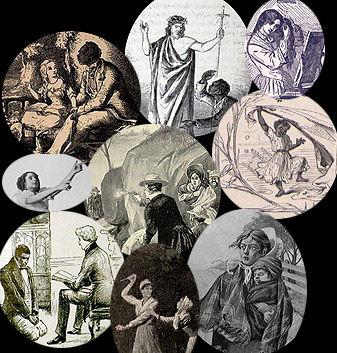| "There is no arguing with pictures, and everybody is impressed with
them" -- that's the way Stowe described her plans in the letter she wrote
Gamaliel Bailey, editor of the National Era, 9 March 1851. Calling
herself a "painter," she said she would use words "to hold up in the most
lifelike and graphic manner possible Slavery . . . and the negro character."*
From its first publication, on the other hand, her text has been supplemented by
real pictures. Included in this part of the archive are hundreds of
illustrations from various American editions of Uncle Tom's Cabin, 1852 -
1930. These images unquestionably had a lot to do with shaping the way white
Americans saw--or thought they saw--"slavery and the negro." And despite
Stowe's claim, appreciating the
story these pictures tell gives us
a lot to argue with and about. For more on ILLUSTRATING UNCLE TOM'S CABIN, see Jo-Ann Morgan's essay in the site's INTERPRET MODE.
|


